Drag and drop the correct items from the right to complete this Python script to automate the creation of Cisco Webex Teams spaces and memberships. Not all options are used.
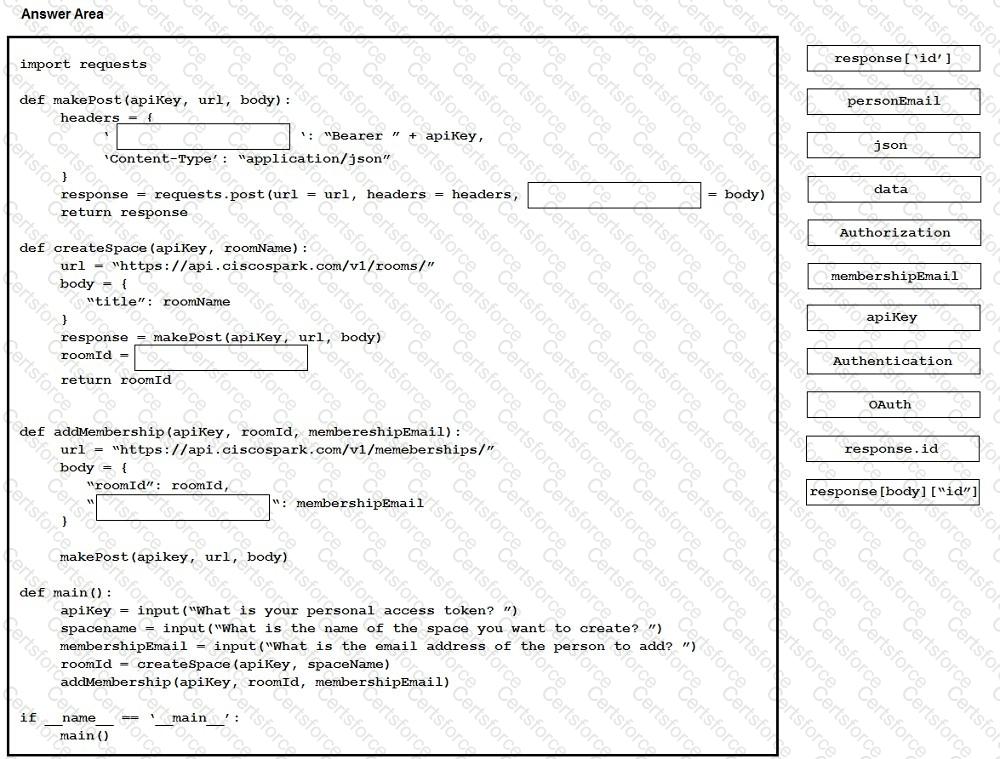
An engineer must automate the creation of daily, 30-minute meetings at 10 AM for the next 50 days. Drag and drop the code snippets from the bottom onto the boxes in the Python script to create the meetings by using the Webex Meetings API. Not all options are used.
Select and Place:
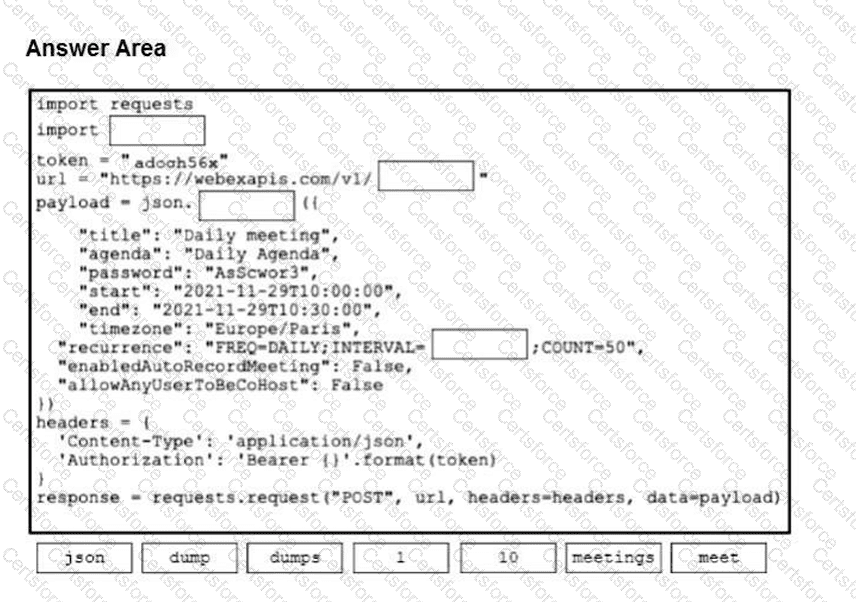
What are two characteristics of JavaScript macros for Cisco collaboration room devices? (Choose two.)
Drag and drop the code from the bottom onto the box where the JavaScript code is missing to list licenses in a critical state. Not all options are used.
Select and Place:
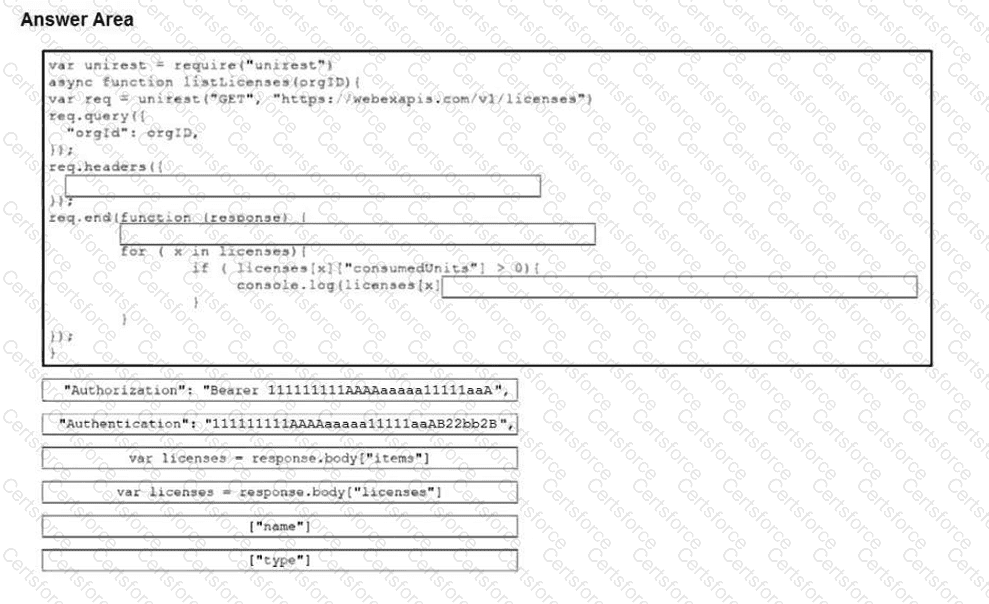
Which two methods can be used to add a custom UI panel to a Webex room device? (Choose two.)
Drag and drop the code snippets from the bottom onto the blanks in the script that sends the Server Down message to User One at userone@example.com and to the CLAUTONOC space with room ID A1bcA1 by using Cisco Webex. Not all options are used.
Select and Place:
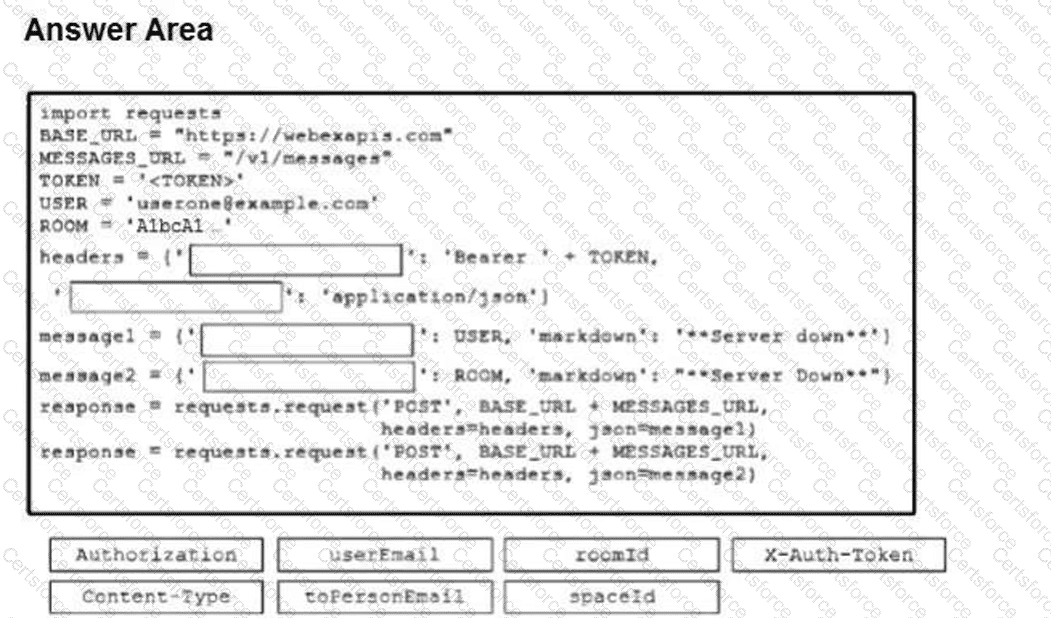
What are two guiding principles of a REST API? (Choose two.)
Which format is used for guest tokens in Webex?
Which two use cases can be accomplished using the Finesse JavaScript library? (Choose two.)
Refer to the exhibit.
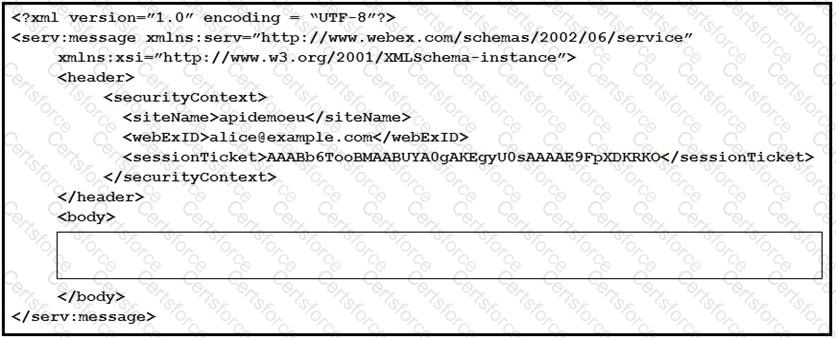
Alice is a Webex Meetings admin for her organization. Which code snippet completes a Webex Meetings XML API request that returns all users?
